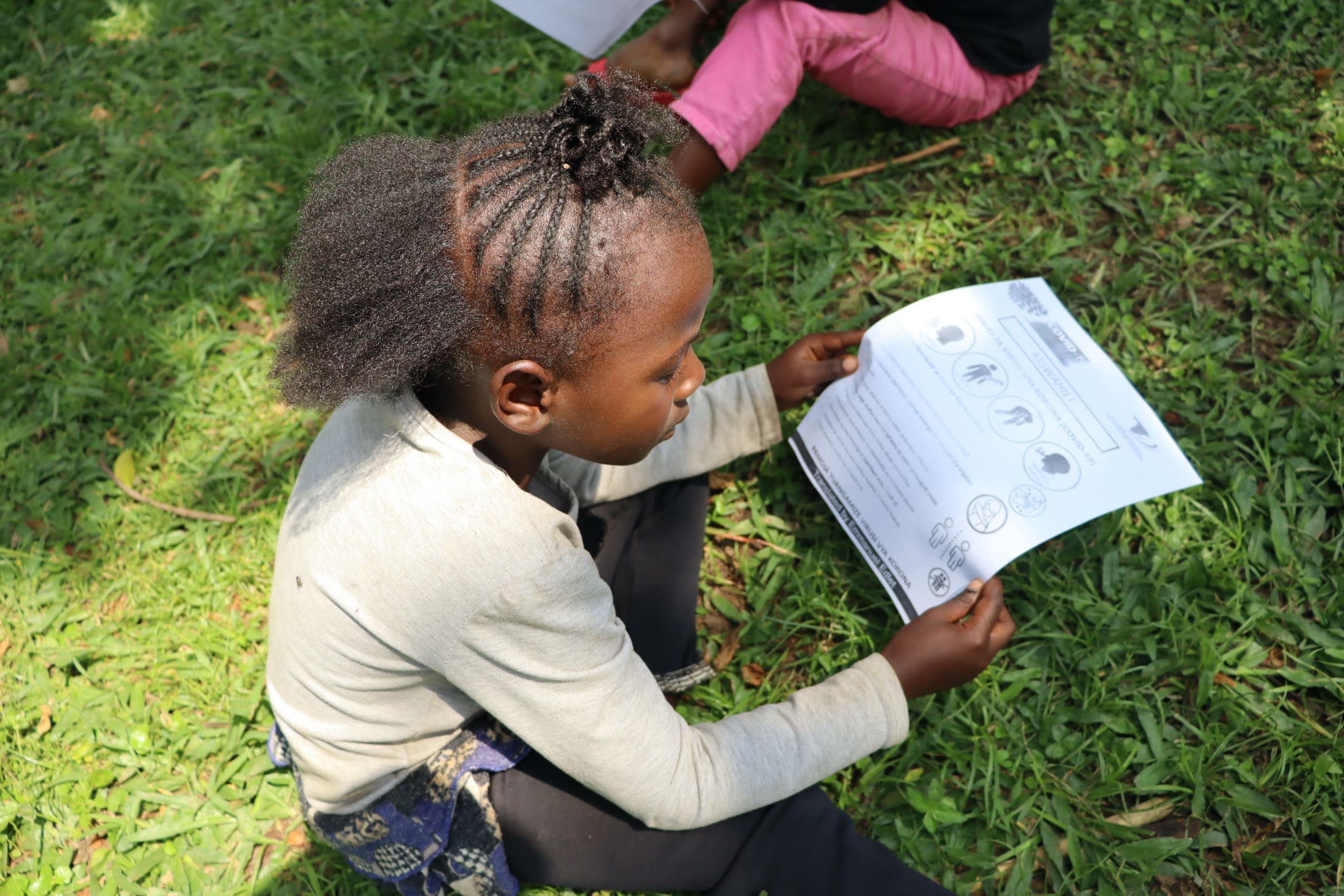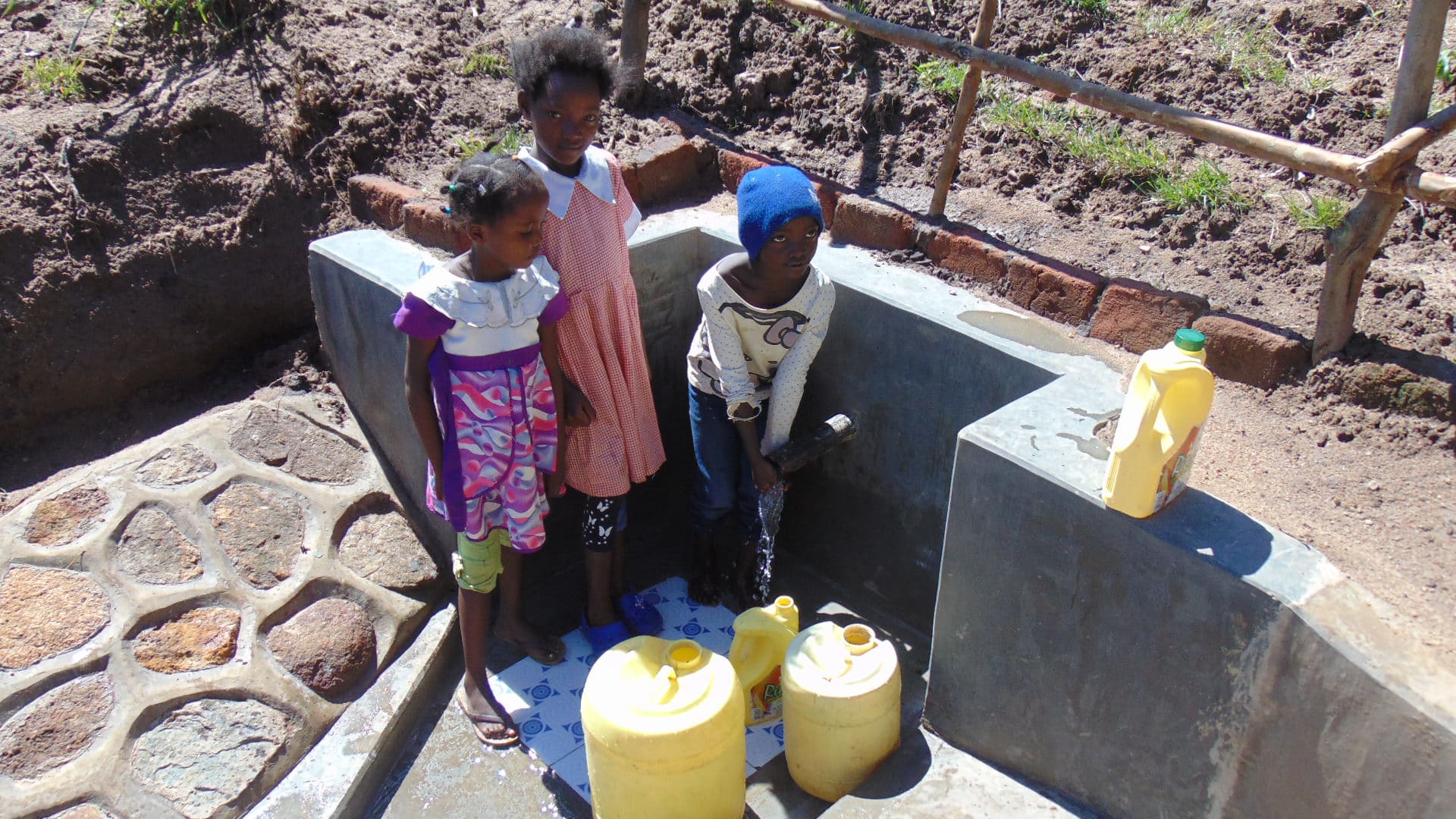Mushianda Spring is located in Ivinzo Village, in Shibuli sublocation within Kakamega County.
A normal day involves waking up every morning as early as 5am. Both men and women have their daily routine and activities lined up for the day.
Since the area is near a market center, the men, who are mostly motorbike operators and small-scale farmers, prefer to start farm work as soon as the first light hits the ground. The women prepare the children for school.
The farm work is done for two hours by the men. They then proceed to the market center to start the motorbike business. The women take over the farm work after sending the children to school. Most women are also involved in other household chores such as fetching water, cooking and washing clothes.
Other women are employed either as teachers or run a small business. In such cases, the farm work is delegated to relatives or neighbors.
Water
This particular spring serves a population of about 400 people, with more people opting to fetch their water there during the dry season. At that time, other sources run dry or the water levels are too low to serve the ever-increasing population of the village.
A water shortage for this community means the women have to travel to other villages to get water for drinking. The people of this community already started mobilizing some of the materials needed to protect the spring in order to reduce cases of water-related diseases among them.
This spring was referred to us by the beneficiaries of a similar project from a neighboring village who saw how their neighbors are having a hard time getting clean and safe water.
"We have really desired to get clean water for a very long time. We have been suffering from diseases all along wondering where our refuge would come from," Mr. Daniel Asila said.
They were so happy to have us visit their spring, as they had initially been stuck trying to raise money to complete the protection on their own.
Since the water source is on a rock, there is a sort of a water basin where the water flows in and is allowed to settle before one can fetch it using a small plastic container or a jug. The water is then poured it into bigger jerrycans.
The gathered water is stored at home in bigger plastic containers or basins, depending on the purpose of use. Drinking water is either stored in 5-liter plastic water jerrycans or clay pots inside the house.
The current water source is contaminated, the water is open and there are no measures in place to block pollutants from infecting the water - surface runoff washes into the source and animals drink from it.
"Several times we have had upset stomachs due to the dirt flows that into this water, but now God has listened to our cries. Many people have had their children admitted to our nearby health clinic due to water-related diseases, but now we are sure all these will be eliminated," Mr. Asila said.
Sanitation
More than half of households have latrines. Most of the latrines are mud-thatched. The foundations are also made of wood and mud. The roofing in most cases is done by iron sheets.
In some cases, the latrine structure is made of polythene bags, with no doors and no roofs. The smell of these latrines is not so good.
With this kind of latrines, the children opt to help themselves outside due to the fear that they may hurt themselves or even fall into the pit.
A majority of the people dispose their garbage at their farms. When the pits are full the compost dirt is picked up and papers are burnt. That then turns into manure to use with the crops.
Here’s what we’re going to do about it:
Training
Community members will attend hygiene and sanitation training for at least two days. This training will ensure participants have the knowledge they need about healthy practices and their importance. The facilitator plans to use PHAST (Participatory Hygiene and Sanitation Transformation), CLTS (Community-Led Total Sanitation), ABCD (Asset-Based Community Development), group discussions, handouts, and demonstrations at the spring. One of the most important topics we plan to cover is the handling, storage, and treatment of water. Having a clean water source will be extremely helpful, but it is useless if water gets contaminated by the time it’s consumed. Handwashing will also be a big topic.
Training will also result in the formation of a committee that will oversee operations and maintenance at the spring. They will enforce proper behavior around the spring and delegate tasks that will help preserve the site, such as building a fence and digging proper drainage. The fence will keep out destructive animals, and the drainage will keep the area’s mosquito population at a minimum.
Sanitation Platforms
On the final day of training, participants will select five families that should benefit from new latrine floors.
Training will also inform the community and selected families on what they need to contribute to make this project a success. They must mobilize locally available materials, such as bricks, clean sand, hardcore, and ballast. The five families chosen for sanitation platforms must prepare by sinking a pit for the sanitation platforms to be placed over. All community members must work together to make sure that accommodations and food are always provided for the work teams.
Spring Protection
Protecting the spring will ensure that the water is safe, adequate and secure. Construction will keep surface runoff and other contaminants out of the water. With the community’s high involvement in the process, there should be a good sense of responsibility and ownership for the new clean water source.
Fetching water is predominantly a female role, done by both women and young girls. Protecting the spring and offering training and support will, therefore, help empower the female members of the community by giving them more time and efforts to engage and invest in income-generating activities.

 Protected Spring
Protected Spring
 Rehabilitation Project
Rehabilitation Project






































